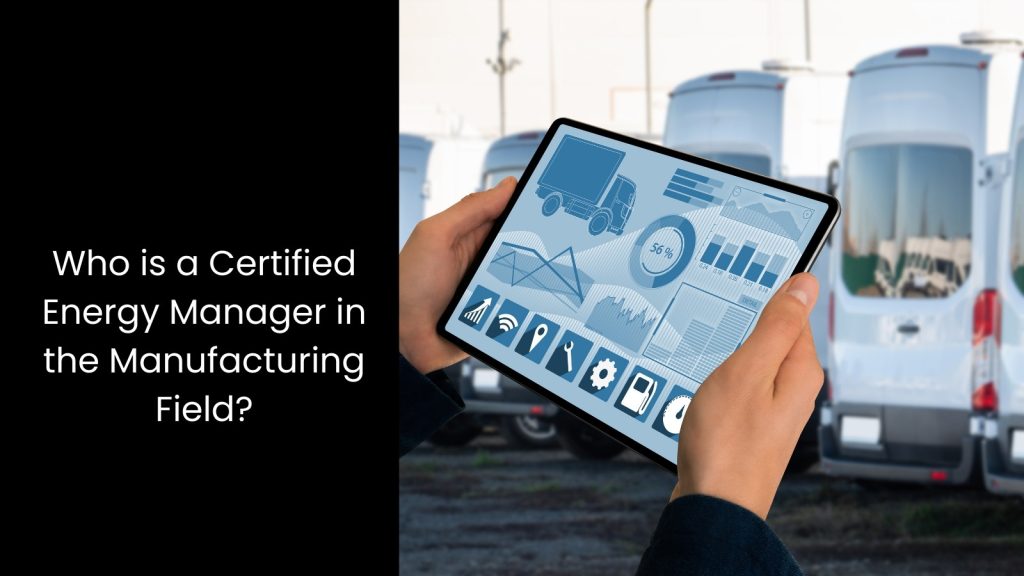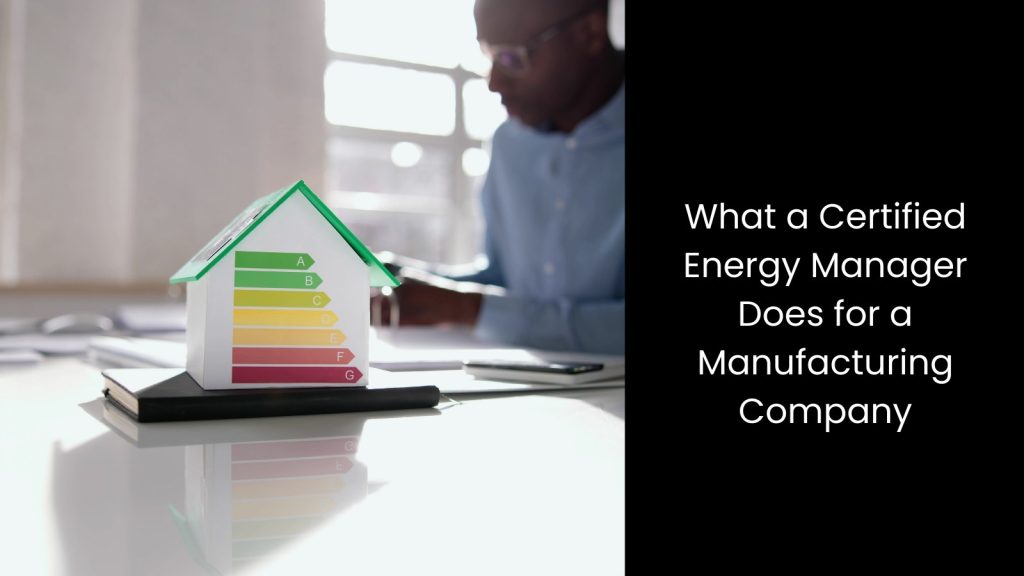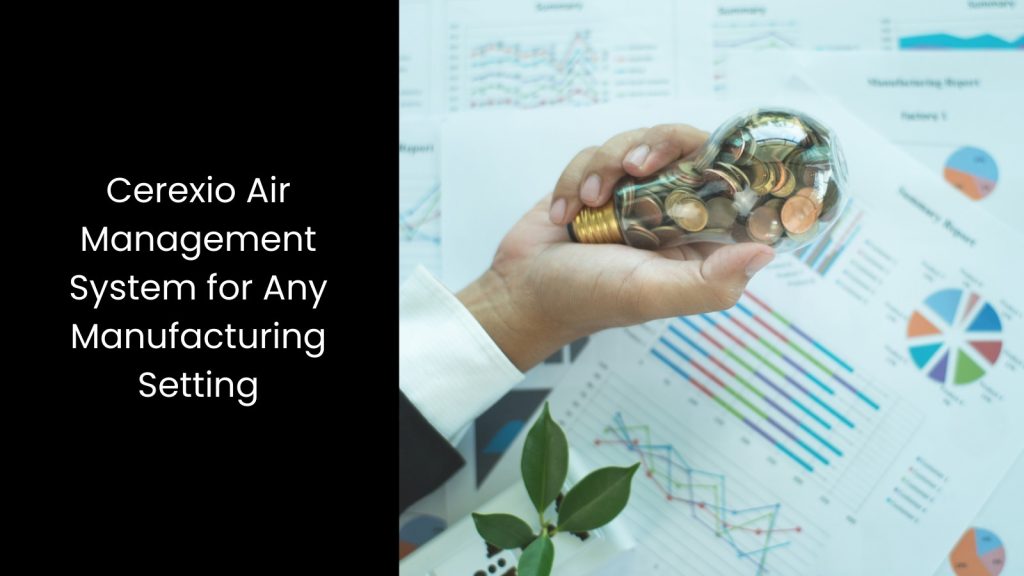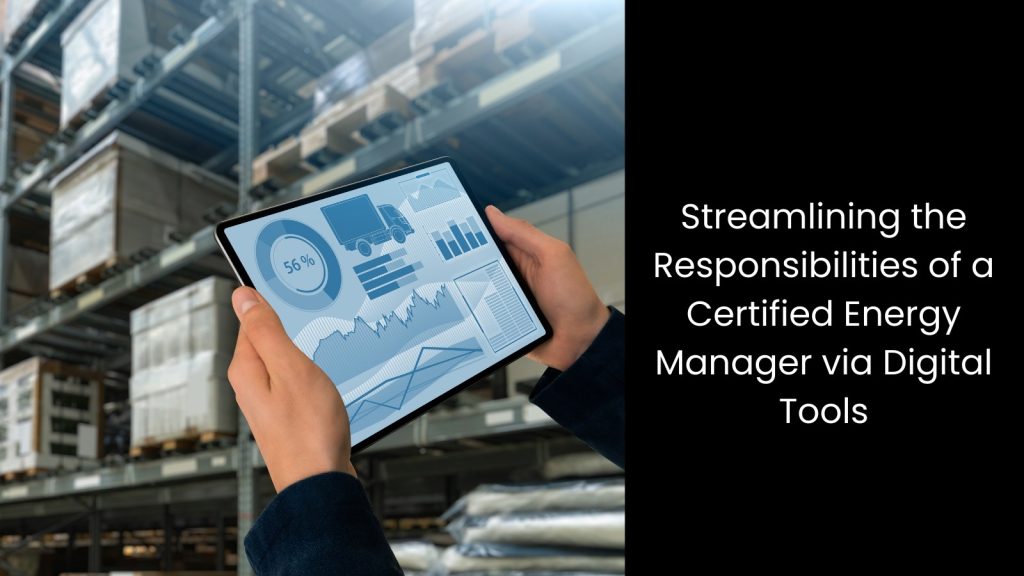How can global manufacturing companies effectively tackle rising energy costs and environmental regulations? Singapore, as a nation, pushes toward sustainability and reduced carbon emissions, and the demand for efficient energy management has been growing day by day. This is where the need for a Certified Energy Manager (CEM) becomes essential for the manufacturing industry in Singapore to optimise energy consumption.
This article explores the complex role that Certified Energy Managers play in enhancing energy efficiency and sustainability within Singapore’s dynamic manufacturing landscape.
We will know
Who is a Certified Energy Manager in the Manufacturing Field?

- A Certified Energy Manager, or CEM, is an expert in energy management who helps organisations, particularly in industries like manufacturing, optimise their energy use and reduce costs. This role covers every aspect of analysing energy consumption, identifying inefficiencies, and developing strategies to improve energy efficiency.
- Certified by professional organisations in respective countries, a CEM possesses in-depth knowledge of energy systems, renewable energy, and energy-saving technologies. They assess the performance of equipment and systems, ensuring they operate at peak efficiency while minimising energy waste.
- CEMs create energy management plans that align with both company goals and environmental standards, helping businesses save money on energy bills while reducing their environmental impact. After conducting energy audits, they identify opportunities for improvement, such as upgrading machinery or adopting new technologies like LED lighting or energy-efficient HVAC systems.
- Also, CEMs play a key role in educating staff about energy conservation and training them to use energy-efficient equipment. They normally collaborate with engineers and other professionals to integrate renewable energy sources, like solar or wind power, into a company’s operations, further reducing reliance on non-renewable resources.
- This way, their expertise in energy performance metrics, technology upgrades, and compliance with energy codes makes them vital to the modern business world.
What a Certified Energy Manager Does for a Manufacturing Company

Conducting Energy Audits
As a part of their duties, CEMs help Singaporean manufacturing companies by conducting comprehensive energy audits to assess energy usage, identify inefficiencies, and recommend improvements.
As they examine the facility’s lighting, HVAC systems, machinery, and production processes, the CEM identifies areas where energy is being wasted or used inefficiently. For example, outdated machinery may consume more energy than necessary, or the heating and cooling systems might be overworking due to poor insulation. After pinpointing these inefficiencies, the CEM offers practical recommendations to improve energy efficiency, which can include upgrading to energy-efficient equipment, optimising production schedules to reduce peak energy demand, or implementing better energy management practices.
It is crystal clear that in a Singaporean manufacturing setting, where energy costs can be high, these improvements can lead to significant cost savings and a reduced environmental footprint.
Energy Data Analysis
They help a manufacturing company improve energy efficiency through energy data analysis as the next stage of the process.
The CEM monitors and analyses energy consumption data to track performance, identify trends, and optimise energy efficiency. After gathering data from various sources such as machinery, lighting, HVAC systems, and production lines, the CEM evaluates how much energy is being used across different operations.
After conducting a thorough audit, as we explained in the above section, analysing this data is essential because it provides insights into the company’s energy consumption patterns and helps spot inefficiencies. For example, the CEM may identify that certain equipment consumes more energy than necessary during off-peak hours or that energy usage spikes during particular phases of production.
These trends allow the CEM to make data-driven decisions on where to reduce waste and improve efficiency. Through this process, the CEM can recommend solutions like adjusting operational schedules, upgrading to more energy-efficient machines, or optimising equipment maintenance routines.
Energy Management Planning
If we consider the main responsibilities of a CEM, energy management planning is certainly at the top of that list, as it helps reduce energy costs, improve efficiency, and meet sustainability goals.
A Certified Energy Manager helps develop and implement strategic energy management plans that align with the company’s sustainability goals and regulatory requirements. Once they understand how the company uses energy, the CEM can create a plan that optimises energy usage, ensuring that energy is not wasted during production processes or through inefficient equipment.
This sort of planning is important because it directly impacts the company’s bottom line. When they improve energy efficiency, the company can lower its energy bills, freeing up resources for other investments.
In addition, Singapore has strict environmental regulations that companies must follow to reduce their carbon footprint. A well-structured energy management plan helps the company stay compliant with these regulations while contributing to global sustainability efforts. The CEM’s role involves setting clear goals for energy reduction, such as upgrading to energy-efficient technologies, improving insulation, or using renewable energy sources.
Suggesting Cost Reduction Strategies
They are employed to implement cost-saving measures that reduce energy consumption, optimise load management, and take advantage of energy rebates and incentives as the main part of energy efficiency boosting.
The CEM has to identify inefficient processes or outdated equipment, and then he suggests improvements, such as upgrading to energy-efficient machinery or using automated systems that reduce unnecessary energy use. This helps lower the overall energy consumption, which directly cuts down on the company’s energy bills.
Load management is another key area where the CEM focuses on cost reduction. The CEM ensures that the company optimises its energy load by balancing energy demand during peak and off-peak hours. For example, the CEM will recommend running energy-intensive processes during times when energy rates are lower, reducing the cost per kilowatt hour. This strategy helps the company avoid paying higher energy rates during peak demand periods and ensures that energy is used more efficiently.
Renewable Energy Integration
It is the duty of CEM to evaluate the potential for integrating renewable energy sources like solar or wind power into its manufacturing processes to reduce reliance on non-renewable energy.
In Singapore’s landscape, where space is limited and environmental regulations are strict, the CEM first assesses the company’s energy needs and looks for opportunities to incorporate renewable energy solutions that fit the company’s operations and sustainability goals. You may already know that solar energy is particularly suitable for Singapore due to the abundant sunlight throughout the year.
The CEM has the knowledge to recommend installing solar panels on factory rooftops or unused land around the facility to harness this renewable resource. This reduces the company’s dependence on traditional electricity sources, lowering energy costs and decreasing its carbon footprint.
Likewise, for wind energy, while Singapore’s urban density makes large-scale wind farms challenging, the CEM can explore small-scale wind turbines in certain locations or offshore wind options. The CEM evaluates the technical and financial feasibility of these renewable sources, calculating potential energy savings and return on investment for the company.
Cerexio Energy Management Platform to Boost Energy Efficiency

The Cerexio offers a robust Energy Management Platform that enhances energy efficiency in manufacturing companies through its ability to provide real-time monitoring and data analytics. This modern software solution helps identify inefficiencies, optimise energy consumption, and implement cost-saving measures, taking the heavy work burden off your CEM’s shoulder. With its intuitive interface, users can easily track energy usage and receive actionable insights for improvements. This platform employs Industry 4.0 capabilities, such as IoT integration and advanced data analytics, to empower manufacturers to achieve sustainable energy practices and improve overall operational performance.
Streamlining the Responsibilities of a Certified Energy Manager via Digital Tools

As you can see, the integration of digital tools into energy management practices empowers Certified Energy Managers to optimise their responsibilities efficiently. It is high time for your company to adopt digital solutions that can drive significant energy savings and create a more sustainable future.
